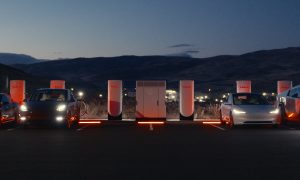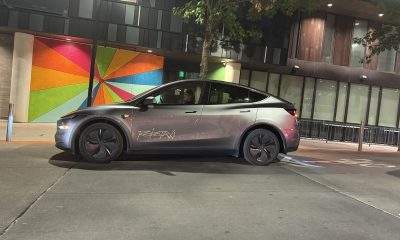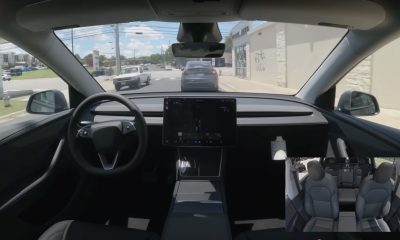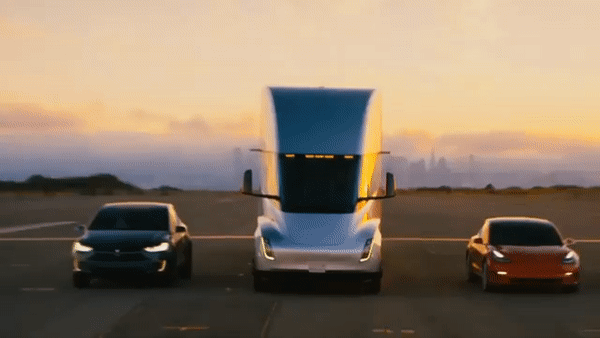

Investor's Corner
Tesla charges towards record Q4 with 13.7k new Model 3 VIN registrations in 2 days
Tesla ended the third quarter on a strong note, but if the electric car maker’s activities this October so far are any indication, it appears that the company is looking to end Q4 in an even more remarkable fashion. Amidst reports that Tesla has produced the 100,000th Model 3, the Silicon Valley-based company also registered more than 13,000 new Model 3 VINs in just two days.
This weekend’s VIN registrations were notable, considering that as of October 8, Tesla had already registered around 17,800 Model 3 in Q4. This past weekend’s filings were remarkable in their own right, as it saw the registration of the biggest batch of Model 3 VINs yet – 9,426 vehicles, ~52% of which are estimated to be Dual Motor AWD. With these latest filings, Tesla had registered a total of 148,386 Model 3 VINs to date.
#Tesla registered 9,426 new #Model3 VINs. ~52% estimated to be dual motor. Highest VIN is 148386. https://t.co/3pDIYHWgim
— Model 3 VINs (@Model3VINs) October 14, 2018
Tesla’s rate of VIN registrations appears to be picking up this month. October is only halfway through, but the company had already filed 30,478 new Model 3 VINs. If Tesla continues with this pace, October could easily be a record month for the Model 3’s registrations. While VIN registrations do not directly correspond to the number of vehicles immediately being produced by the carmaker, the rate of filings does give an idea about the pace of the Model 3 ramp. Elon Musk acknowledged this in the Q1 2018 earnings call, when he noted that “any information that we provide would be a week or two in advance of what will become public knowledge just due to vehicle registrations and shipments that are tracked very carefully.”
Earlier this week, Bloomberg‘s Tesla Model 3 production tracker, which has become more accurate with time, also showed that the overall production of the electric sedan has gone past the 100,000-mark. The tracker, which uses data from VIN registrations, social media reports from Model 3 owners, as well as direct reports submitted to the publication, currently estimates a total of 101,067 Model 3 built to date.
As further signs emerge of Tesla’s Model 3 ramp hitting its stride, it seems like Elon Musk’s long-term play for the electric car’s production is finally taking shape. When Musk envisioned the manufacturing of the Model 3, he saw an automated machine that builds the machine – one that would look nothing short of an “Alien Dreadnought.” The first 12 months following the start of the Model 3’s production proved challenging for Elon Musk and Tesla, though, as one bottleneck after another started emerging from both the Fremont factory and Gigafactory 1.
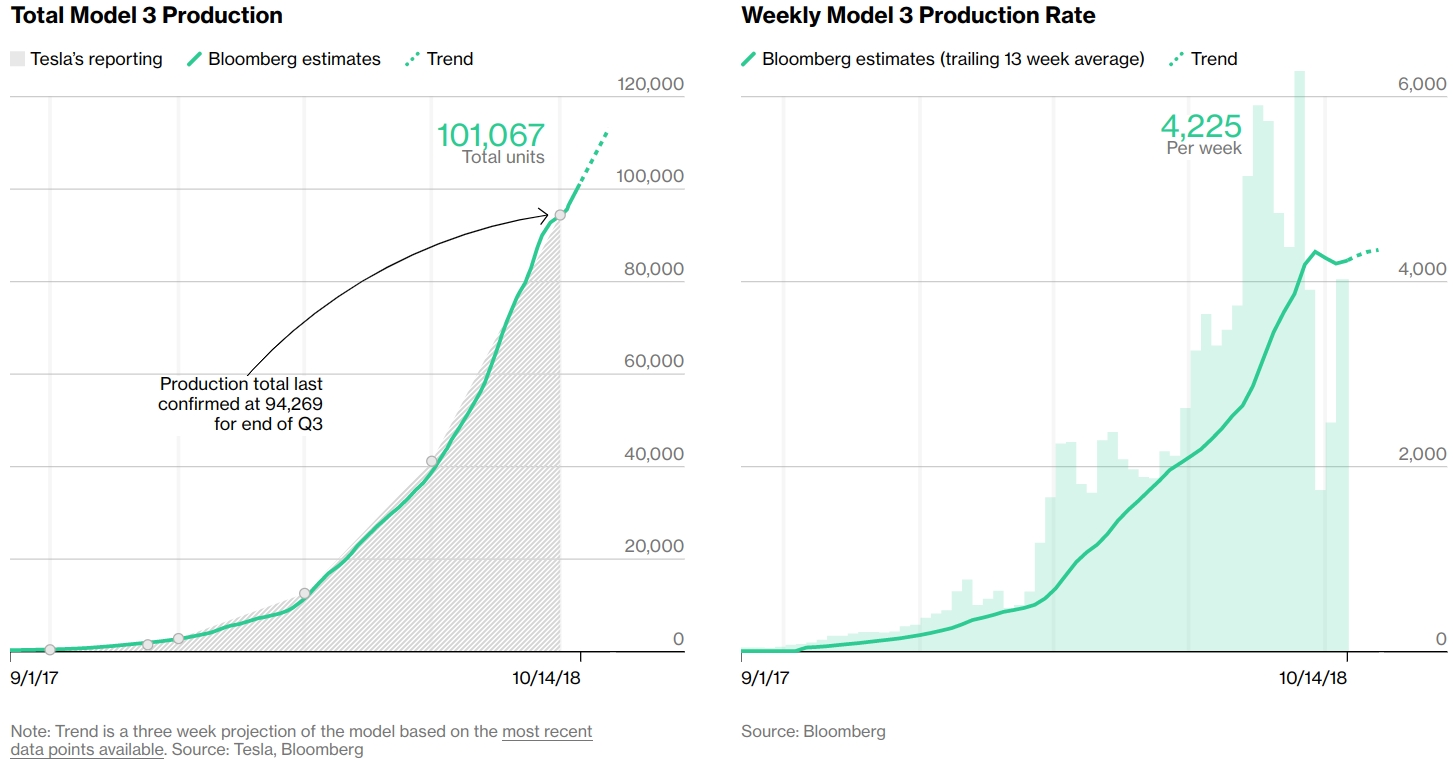
Eventually, it would be Tesla’s capacity to explore out-of-the-box strategies that ultimately made a difference in the Model 3 ramp. As Tesla adopted a more balanced workforce that utilized both humans and robots to construct the electric sedan, the company also looked into more unorthodox strategies to hit its targets. At the final month of Q2, for example, Tesla set up GA4, a Model 3 assembly line built inside a sprung structure. George Galliers, an analyst from Evercore ISI in London, visited the Fremont factory and noted that GA4, despite being built on the controversial “tent,” “looks to be permanent and in theory should be able to support much faster cycle times” following more optimizations.
In Q3, it was also revealed that Gigafactory 1 is receiving more upgrades in the form of new Grohmann machines, which would be installed by the end of the third quarter or the beginning of Q4. These new Grohmann machines, according to analysts from Worm Capital, will “help module production become three times faster, and three times cheaper.” Panasonic, which previously announced that it is looking to finish its upgrades to Gigafactory 1’s battery cell production lines, has revealed that it is expediting the installation of new cell production lines as well.
It remains to be seen if the record batches of Model 3 VIN registrations are the result of improvements in the battery module production lines in Gigafactory 1. That said, considering Tesla’s tendency to continuously improve and innovate as it goes, it appears that the Model 3 ramp would be stable and strong enough to allow the company to charge ahead towards the end of 2018.
https://www.instagram.com/p/BoSgB3rBVVL/?taken-by=teslamotors
Elon Musk
Tesla investors will be shocked by Jim Cramer’s latest assessment
Jim Cramer is now speaking positively about Tesla, especially in terms of its Robotaxi performance and its perception as a company.

Tesla investors will be shocked by analyst Jim Cramer’s latest assessment of the company.
When it comes to Tesla analysts, many of them are consistent. The bulls usually stay the bulls, and the bears usually stay the bears. The notable analysts on each side are Dan Ives and Adam Jonas for the bulls, and Gordon Johnson for the bears.
Jim Cramer is one analyst who does not necessarily fit this mold. Cramer, who hosts CNBC’s Mad Money, has switched his opinion on Tesla stock (NASDAQ: TSLA) many times.
He has been bullish, like he was when he said the stock was a “sleeping giant” two years ago, and he has been bearish, like he was when he said there was “nothing magnificent” about the company just a few months ago.
Now, he is back to being a bull.
Cramer’s comments were related to two key points: how NVIDIA CEO Jensen Huang describes Tesla after working closely with the Company through their transactions, and how it is not a car company, as well as the recent launch of the Robotaxi fleet.
Jensen Huang’s Tesla Narrative
Cramer says that the narrative on quarterly and annual deliveries is overblown, and those who continue to worry about Tesla’s performance on that metric are misled.
“It’s not a car company,” he said.
He went on to say that people like Huang speak highly of Tesla, and that should be enough to deter any true skepticism:
“I believe what Musk says cause Musk is working with Jensen and Jensen’s telling me what’s happening on the other side is pretty amazing.”
Tesla self-driving development gets huge compliment from NVIDIA CEO
Robotaxi Launch
Many media outlets are being extremely negative regarding the early rollout of Tesla’s Robotaxi platform in Austin, Texas.
There have been a handful of small issues, but nothing significant. Cramer says that humans make mistakes in vehicles too, yet, when Tesla’s test phase of the Robotaxi does it, it’s front page news and needs to be magnified.
He said:
“Look, I mean, drivers make mistakes all the time. Why should we hold Tesla to a standard where there can be no mistakes?”
It’s refreshing to hear Cramer speak logically about the Robotaxi fleet, as Tesla has taken every measure to ensure there are no mishaps. There are safety monitors in the passenger seat, and the area of travel is limited, confined to a small number of people.
Tesla is still improving and hopes to remove teleoperators and safety monitors slowly, as CEO Elon Musk said more freedom could be granted within one or two months.
Investor's Corner
Tesla gets $475 price target from Benchmark amid initial Robotaxi rollout
Tesla’s limited rollout of its Robotaxi service in Austin is already catching the eye of Wall Street.

Venture capital firm Benchmark recently reiterated its “Buy” rating and raised its price target on Tesla stock (NASDAQ: TSLA) from $350 to $475 per share, citing the company’s initial Robotaxi service deployment as a sign of future growth potential.
Benchmark analyst Mickey Legg praised the Robotaxi service pilot’s “controlled and safety-first approach,” adding that it could help Tesla earn the trust of regulators and the general public.
Confidence in camera-based autonomy
Legg reiterated Benchmark’s belief in Tesla’s vision-only approach to autonomous driving. “We are a believer in Tesla’s camera-focused approach that is not only cost effective but also scalable,” he noted.
The analyst contrasted Tesla’s simple setup with the more expensive hardware stacks used by competitors like Waymo, which use various sophisticated sensors that hike up costs, as noted in an Investing.com report. Compared to Tesla’s Model Y Robotaxis, Waymo’s self-driving cars are significantly more expensive.
He also pointed to upcoming Texas regulations set to take effect in September, suggesting they could help create a regulatory framework favorable to autonomous services in other cities.
“New regulations for autonomous vehicles are set to go into place on Sept. 1 in TX that we believe will further help win trust and pave the way for expansion to additional cities,” the analyst wrote.
Tesla as a robotics powerhouse
Beyond robotaxis, Legg sees Tesla evolving beyond its roots as an electric vehicle maker. He noted that Tesla’s humanoid robot, Optimus, could be a long-term growth driver alongside new vehicle programs and other future initiatives.
“In our view, the company is undergoing an evolution from a trailblazing vehicle OEM to a high-tech automation and robotics company with unmatched domestic manufacturing scale,” he wrote.
Benchmark noted that Tesla stock had rebounded over 50% from its April lows, driven in part by easing tariff concerns and growing momentum around autonomy. With its initial Robotaxi rollout now underway, the firm has returned to its previous $475 per share target and reaffirmed TSLA as a Benchmark Top Pick for 2025.
Elon Musk
Tesla blacklisted by Swedish pension fund AP7 as it sells entire stake
A Swedish pension fund is offloading its Tesla holdings for good.
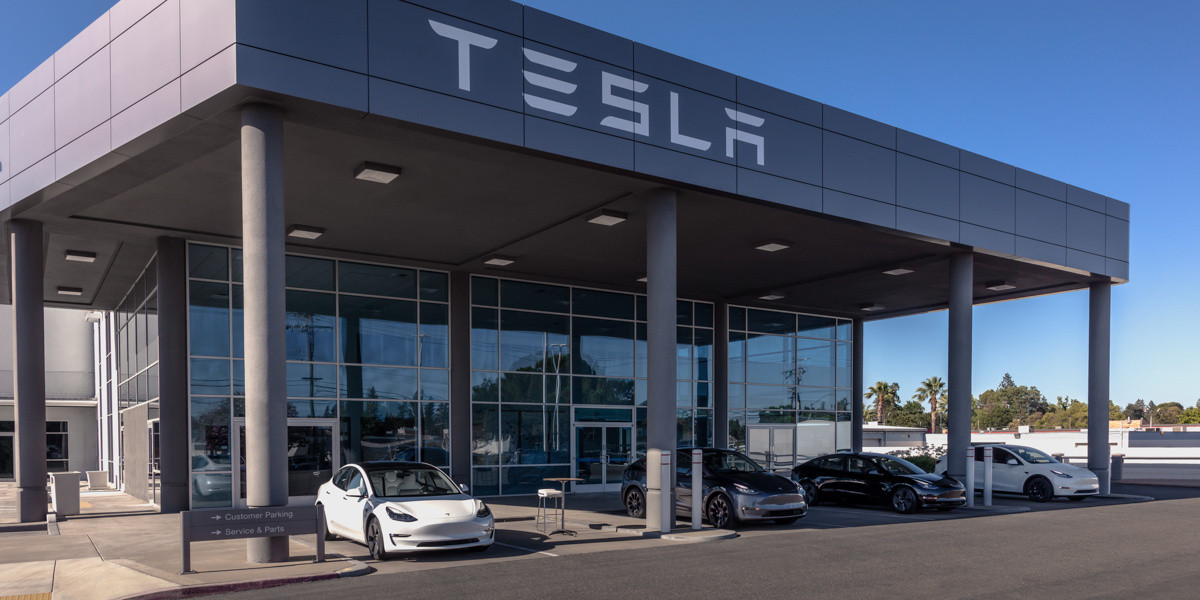
Tesla shares have been blacklisted by the Swedish pension fund AP7, who said earlier today that it has “verified violations of labor rights in the United States” by the automaker.
The fund ended up selling its entire stake, which was worth around $1.36 billion when it liquidated its holdings in late May. Reuters first reported on AP7’s move.
Other pension and retirement funds have relinquished some of their Tesla holdings due to CEO Elon Musk’s involvement in politics, among other reasons, and although the company’s stock has been a great contributor to growth for many funds over the past decade, these managers are not willing to see past the CEO’s right to free speech.
However, AP7 says the move is related not to Musk’s involvement in government nor his political stances. Instead, the fund said it verified several labor rights violations in the U.S.:
“AP7 has decided to blacklist Tesla due to verified violations of labor rights in the United States. Despite several years of dialogue with Tesla, including shareholder proposals in collaboration with other investors, the company has not taken sufficient measures to address the issues.”
Tesla made up about 1 percent of the AP7 Equity Fund, according to a spokesperson. This equated to roughly 13 billion crowns, but the fund’s total assets were about 1,181 billion crowns at the end of May when the Tesla stake was sold off.
Tesla has had its share of labor lawsuits over the past few years, just as any large company deals with at some point or another. There have been claims of restrictions against labor union supporters, including one that Tesla was favored by judges, as they did not want pro-union clothing in the factory. Tesla argued that loose-fitting clothing presented a safety hazard, and the courts agreed.
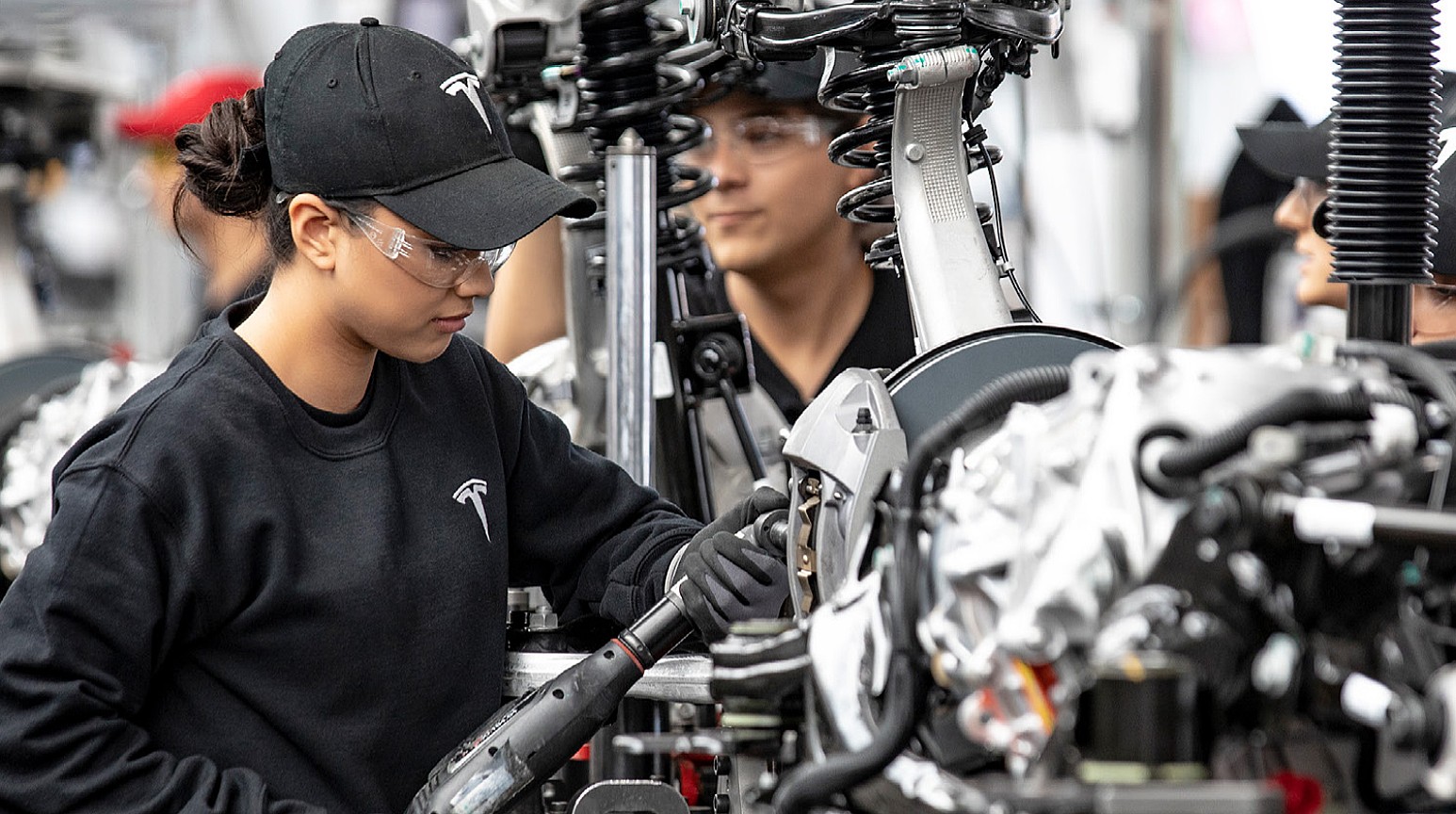
(Photo: Tesla)
There have also been claims of racism at the Fremont Factory by a former elevator contractor named Owen Diaz. He was awarded a substantial sum of $137m. However, U.S. District Judge William Orrick ruled the $137 million award was excessive, reducing it to $15 million. Diaz rejected this sum.
Another jury awarded Diaz $3.2 million. Diaz’s legal team said this payout was inadequate. He and Tesla ultimately settled for an undisclosed amount.
AP7 did not list any of the current labor violations that it cited as its reason for
-

 News5 days ago
News5 days agoTesla Robotaxi’s biggest challenge seems to be this one thing
-

 News2 weeks ago
News2 weeks agoTesla confirms massive hardware change for autonomy improvement
-

 Elon Musk2 weeks ago
Elon Musk2 weeks agoElon Musk slams Bloomberg’s shocking xAI cash burn claims
-

 News2 weeks ago
News2 weeks agoTesla China roars back with highest vehicle registrations this Q2 so far
-

 News2 weeks ago
News2 weeks agoTesla features used to flunk 16-year-old’s driver license test
-

 News2 weeks ago
News2 weeks agoTesla dominates Cars.com’s Made in America Index with clean sweep
-

 News2 weeks ago
News2 weeks agoTexas lawmakers urge Tesla to delay Austin robotaxi launch to September
-

 News2 weeks ago
News2 weeks agoTesla’s Grok integration will be more realistic with this cool feature




